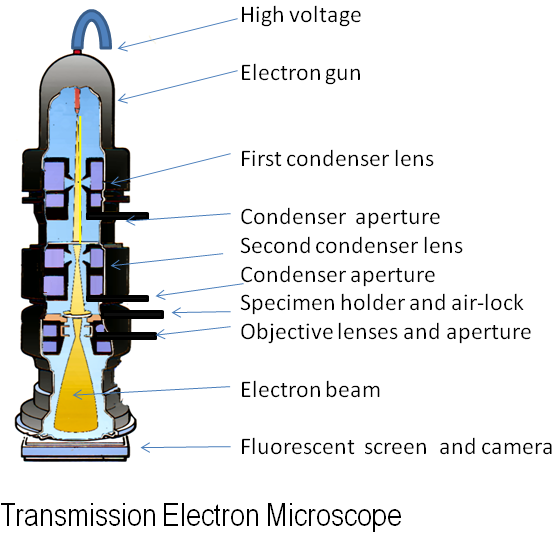New Electron Microscope Gives Us The Best Resolution Ever
Electron microscopes are quite amazing as they allow us to see deep into the microverse. But even it has its limits. The lenses often have their inner flaws and we need special “glasses” to correct that.

A cross-sectional, simplified diagram of a transmission electron microscope
By Dr. Graham Beards (Wikipedia, from Dr. Graham Beards) [Public domain], via Wikimedia Commons
But now, scientists from the Cornell University have devised a new way to get ultra-high resolution with an electron microscope without the need for any “glasses” using their internally developed EMPAD (Electron Microscope Pixel Array Detector). The resolution in electron microscopes is usually enhanced by increasing the aperture of the lenses and increasing the energy of the electrons which work as light for the microscope. So far, the records were usually attained using the “glasses” and extra high electron beams – 300 keV. Using this you could get close to 1 ångström. One ångström is around 0.1 nanometers. And as atomic bonds are roughly 1 – 2 ångströms long getting a resolution of under 1 ångström means we could easily watch individual atoms.
The resolution achieved by the Cornell University’s team ended up being 0.39 ångström making it the new world record. On top of that, they needed a much less energetic electron beam making the method much less drastic for the studied object. They used a method known as ptychography or coherent diffraction imaging (CDI). Their electron beam had an energy of 80 keV and they observed two layers of the popular 2D material molybdenum disulfide. And even though the energy of the electron beam was somewhat low the scientists were still capable of detecting a defect in the crystal matrix.
Sources:
This is really awesome. 80kV is in the range that a lot of CryoEM is done, which 1.8 Angstrom resolution of 3D reconstruction of protein structures can be achieved on modern HRTEM. These types of scopes like the JEOL JEM ARM300 can achieve 0.055 Angstrom resolution, but with Biomolecules there are other limitations that effect the results. Anyhow this little bit of resolution increase will be useful to people imaging large biomolecules because every little advancement can make a big difference.